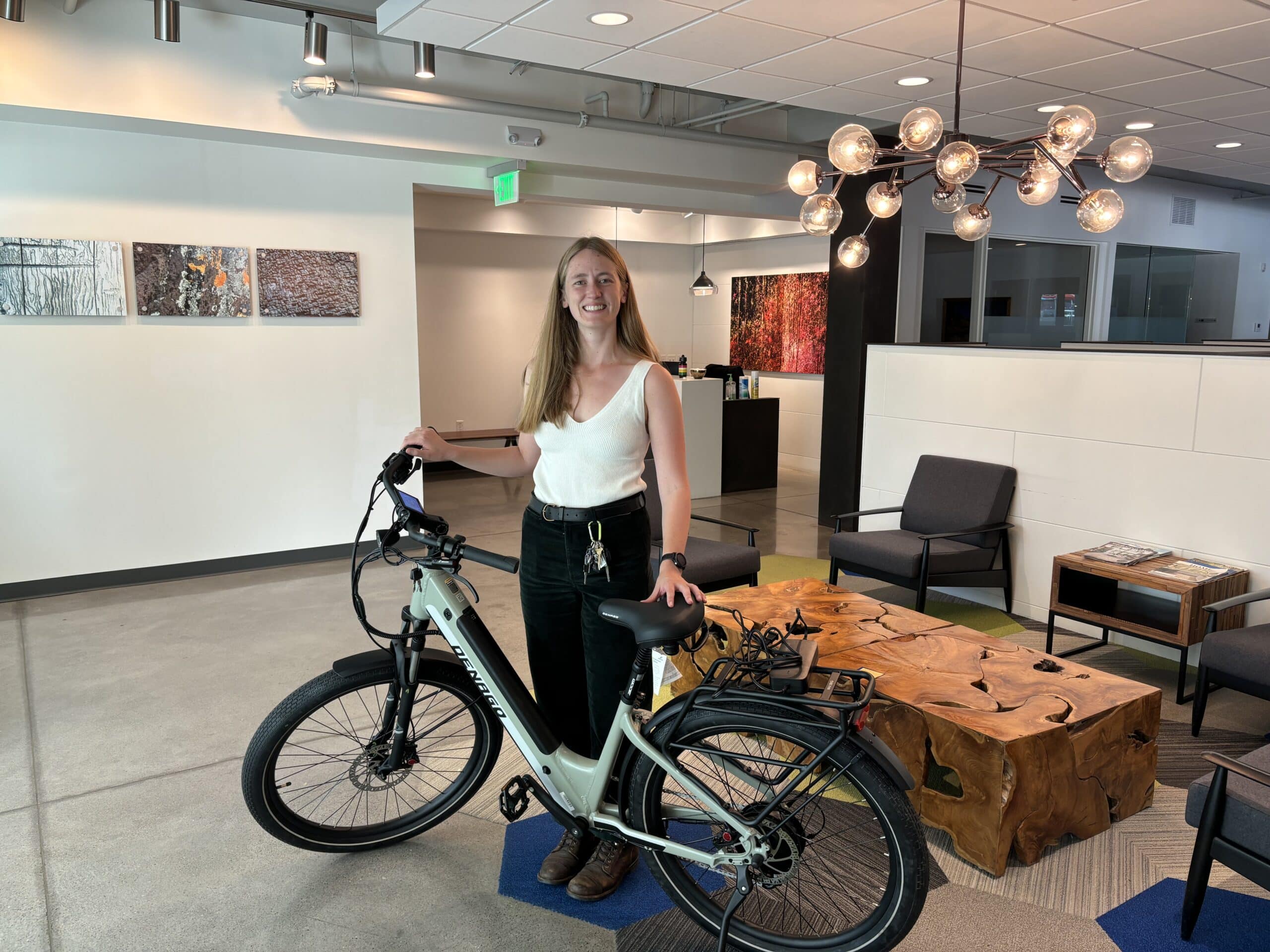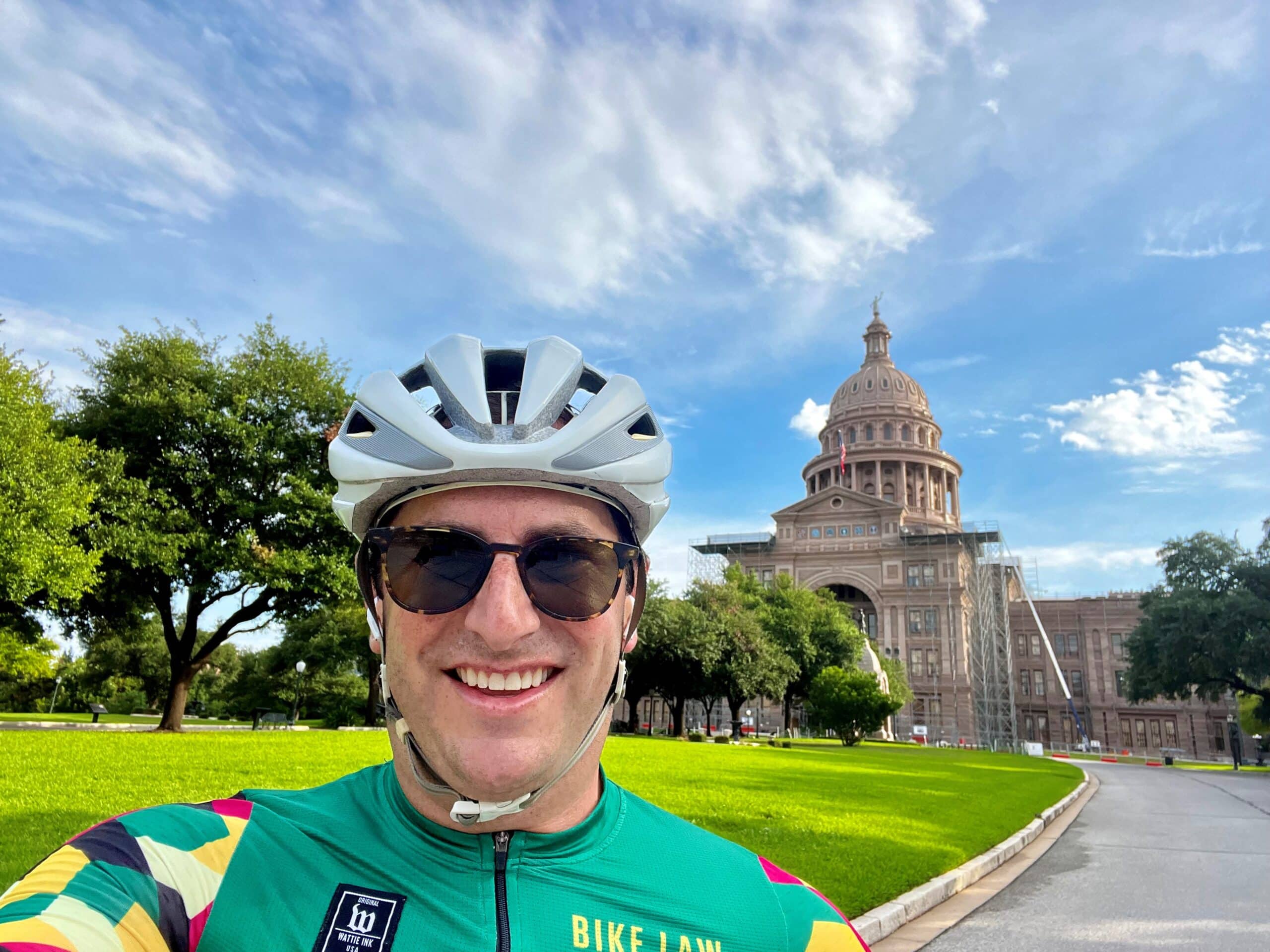As today is Giving Tuesday, the largest funding day for US-based non-profits, it is fitting to reflect on how we can all effectively apply our time and money to make the bicycling movement stronger and more effective.
Top 10 Ways to Become an Active Bicycling Advocate
- Put your money where your mouth is. Support local, state and federal bicycle organizations that are doing advocacy, education and law enforcement work on your behalf. Encourage your teammates, family members, friends and others who care about safe streets to do the same.
- Show up. Bicycle advocacy organizations need more than funding. They need people to show up at events, both as participants and as volunteers. Attend a bike ride. Volunteer at a bike rodeo. Give an hour of time to the Safe Routes to School Program. Contact your legislators. Write testimony in support of the pro-bicycle legislation.
- Offer your expertise. You need not be an attorney, law enforcement officer, transportation planner, engineer or policymaker to make a difference. The expertise of so many other professionals is crucial to make roadways safer for us all. For example, bicycle non-profit organizations cannot counter campaigns put out by the auto industry without the assistance of marketing and communications specialists who believe in the power of the bicycle. Likewise, our departments of health and transportation cannot marshal data about how beneficial bicycling is for our health and environment without doctors, environmental scientists, public health specialists, and others researching these areas and reporting back on their findings.
- Use your standing to take your stand. Apart from volunteering your time and expertise, each one of us can make a difference by modeling, teaching and incorporating bicycle advocacy into our workplaces, homes, and communities. If you are an educator, take your students out to study street design and conduct bike/ped counts. If you are a CEO of a large corporation, develop policies that incentivize your employees to walk, ride and take public transportation to work. If you are a soccer dad, invest in a cargo bike and teach your kids to pedal to practice.
- Monitor the media. Pay attention to how bike crashes are covered in the media and provide necessary feedback to editors, reporters, and newscasters who use harmful or inaccurate descriptors or who only report from a “windshield perspective.” Remind them it is not an “accident” when someone elects to drive at 30mph into glaring sun and kills a bicyclist. Point out that cars do not cause crashes—dangerous operators do (at least until we have autonomous vehicles). Explain how focusing solely on the clothing of a cyclist victim, instead of also reporting on the operational choices of a driver, the existing infrastructure, and other factors not only amounts to victim blaming but perpetuates false public perceptions about why so many people are losing their lives on the roadway.
- Pledge not to drive distracted. We can’t fairly criticize distracted drivers for threatening our lives if we are picking up our phones when we are behind the wheel. Cars are not meant to be conference rooms, karaoke bars, dinner tables or bathroom counters. Put away the phones, food, drinks, makeup, and iPods when driving. Model vigilance on the roadway for your children, co-workers, spouse, and friends. Create a culture where distracted driving is not acceptable.
- Push for bicycle-related safety campaigns. Petition administrative agencies like the Department of Transportation in your state to budget and fund public campaigns and public announcements that remind the public that bicycles belong on the roadway, have a right to be there and deserve respect from drivers.
- Find allies outside of the bicycling community. One of the reasons that change is slow to come is that bicyclists often preach to the choir instead of building new alliances. Bicyclists are not the only ones being buzzed, passed too closely and nearly killed by motor vehicle operators. Road construction crews experience these same hazards daily. Similarly, senior citizens, persons with physical limitations and school children have just as hard of a time making it across poorly designed and maintained intersections as bicycle riders. Yet, our advocacy communities generally operate in isolation. So, one way to speed up progress and better address the challenges that we are up against is to connect with these other people and harness their energy and resources towards shared goals. Invite the president of a sand and gravel or flagging company to coffee to discuss vulnerable user legislation. Recruit members of the AARP to collaborate with you on a safety campaign. Think outside the bike shop. Not only could these alliances result in faster progress and increased resources, but they build empathy on the roadway.
- Engage the opposition. Just as it makes sense to find and have coffee with our hidden allies, sitting down and engaging the adversaries in meaningful dialogue is important. Until we hear our opponent’s concerns, we cannot effectively address or respond to them. Aim for empathy. Ask for a ride-along in a police cruiser. Set an appointment to follow up with the District Attorney to discuss why she decided not to prosecute a case. Get a speaker or table spot at a commercial trucking training or conference. Attend a neighborhood or community meeting in a place where there is perennial tension between bicyclists and drivers.
- Don’t allow yourself or others to be run off the road. One of the largest impediments to progress is the growing sense of hopelessness that is coming from within our own community as more cyclist lives are lost on the roadway. Within the last year, I’ve heard far too many people comment, “Riding on the road is just not safe anymore; I’ve switched over to mountain biking.” This type of proclamation/concession is concerning. When we as spokespeople for the bicycle community speak this way, we are essentially telling the rest of the world that our vision for safe, sustainable and active roadways is unrealistic. Why should others join us if we do not believe in our own cause? No other civil rights or social justice movement has been hastened by this type of resignation. If we are to make meaningful progress, we need to increase—not decrease—the number of riders on the roadway instead of conceding our roads to automobiles and distracted drivers.
Featured Image: Richard Masoner

Lauri Boxer-Macomber has been an avid rider for decades. Lauri’s Maine law practice is focused on advocating for the rights of bicyclists, pedestrians, and other vulnerable road users.
Lauri’s riding experience and legal training are complemented by her advocacy work. She is an active Board Member of the Bicycle Coalition of Maine, a Governor of the Maine Trial Lawyers Association, and a Member of the American League of Bicyclists. She also chairs the Bicycle Coalition of Maine’s Policy and Legislation Committee and is one of the founding members and facilitators of the Bicycle Coalition of Maine’s Law Enforcement Collaborative, a group of law enforcement officers, planners, bicycle advocates, and others who meet regularly with the goal of improving safety on Maine’s roadways.








